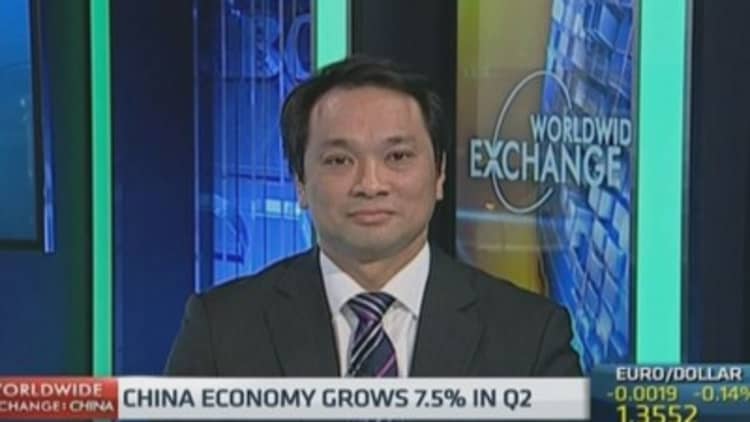More than 70 Chinese smaller cities and counties have dropped gross domestic product as a performance metric for government officials, in an effort to shift the focus to environmental protection and reducing poverty.
The move, which follows a directive issued by top leaders last year, is among the first concrete signs of China switching its blind pursuit of economic growth at all costs towards measures that encourage better quality of life.
Analysts say that adherence to GDP as a performance metric – thus linking it to local officials' promotion – has contributed to environmental degradation and urban sprawl as officials encouraged heavy industry and bulldozed agricultural land to build housing developments.
Read More'Perfect storm' to hit China economy in 2016
"Using GDP as the main assessment method has caused a lot of problems, like unequal income distribution, problems with the social welfare system and environmental costs," said Xie Yaxuan, head of macroeconomic analysis at China Merchants Securities in Shenzhen.
Hebei, a steelmaking province north of Beijing, and Ningxia, an impoverished ethnic minority region in northwest China, have cancelled GDP-based assessment for poor counties and cities, the official Xinhua news has reported in recent months.
Evaluation will instead be based on raising living standards for poor residents and reducing the number of people living in poverty.
Read MoreChina's debt soars to 250% of GDP
"We need to look at obvious achievements as well as hidden achievements," President Xi Jinping told party leaders in June. "We can no longer simply use GDP growth rates to decide who the (party) heroes are."
The directive was outlined in a landmark economic reform blueprint released late last year at a key Communist party meeting.
Fujian, the coastal province that is a centre of export processing and light manufacturing, announced this month that it would replace GDP with metrics on agricultural development and environmental protection for 34 agriculturally and ecologically important counties.

It is unclear whether the change will be taken up by larger, richer cities, where powerful patronage networks have developed between government officials and traditional industries that have become rich on the old growth model.
Officials in these cities have built successful careers on GDP-based evaluation, making it difficult to adjust their policy focus.
Read MoreA fifth of developing world lives on below $1.25 a day
Zhang Gaoli, who was appointed to China's elite seven-member Politburo Standing Committee in late 2012, made a name for himself in part by propelling GDP growth in the megacity of Tianjin, south of Beijing.
After Mr Zhang became party secretary in late 2007, Tianjin's GDP growth averaged 16.1 per cent from 2008 to 2012, a full percentage point higher than the previous five-year period, even as China's overall annual GDP growth slowed sharply to 8.8 per cent in the same period, down from 11.9 per cent in the previous five years.
More from the Financial Times:
Chinese cities pick quality of life as success gauge
BoE report pushes rate rise bets back
Europein backlash against Chinese crackdown
Mr Zhang boosted growth with massive building projects, such as the Yujiapu Financial District, a warren of skyscrapers conceived as China's answer to Manhattan. But today, many of the buildings stand virtually empty and growth in Tianjin has slowed this year.
Policy loopholes could also hamper efforts to transform China's growth model. Coal-rich Shanxi province, in central China, has removed GDP growth from the list of metrics but added per-capita GDP. This change could have little impact, as China's population growth is slow.

